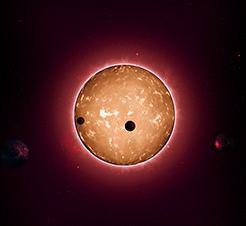Radius 523,400 km (0.752 R☉) Magnitude 9 Apparent magnitude (V) 9 | Age 11.24 billion years Constellation Lyra | |
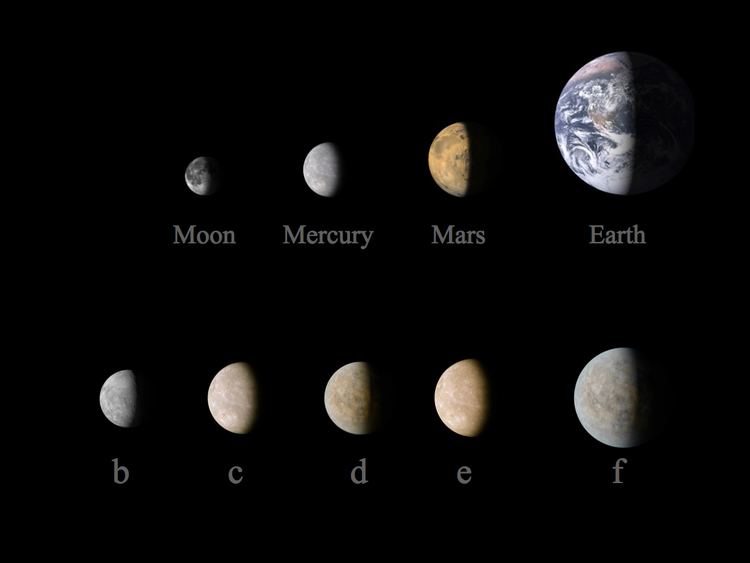 | ||
Mass 1.508 × 10^30 kg (0.758 M☉) Similar Kepler‑138, Kepler‑102, Kepler‑440b, Kepler‑19, Kepler‑9 | ||
Kepler 444 an ancient extrasolar system
Kepler-444 (or KOI-3158, KIC 6278762, 2MASS J19190052+4138043, BD+41 3306) is a star, estimated to be 11.2 billion years old (more than 80% of the age of the universe), approximately 117 light-years (36 pc) away from Earth in the constellation Lyra. On 27 January 2015, the Kepler spacecraft is reported to have confirmed the detection of five sub-Earth-sized rocky exoplanets orbiting the star. According to NASA, no life as we know it could exist on these hot exoplanets, due to their close orbital distances to the host star.
Contents
- Kepler 444 an ancient extrasolar system
- Kepler 444 nasa discovers ancient system with five small planets
- Discovery
- Characteristics
- Planetary system
- References
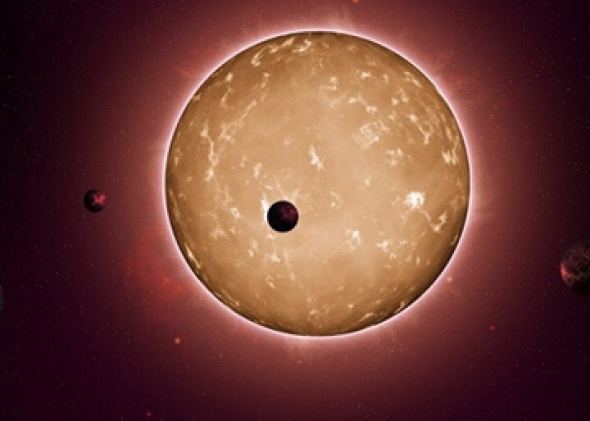
Kepler 444 nasa discovers ancient system with five small planets
Discovery
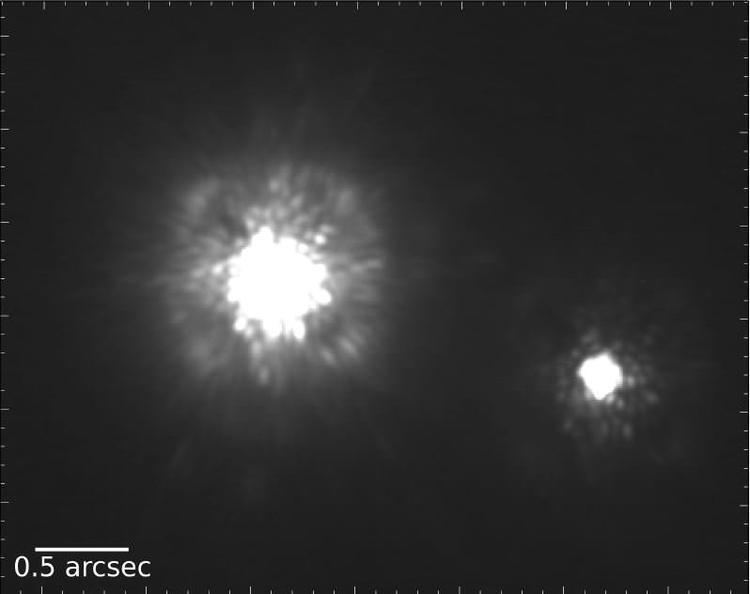
Preliminary results of the planetary system around Kepler-444 were first announced at the second Kepler science conference in 2013. At that conference, the star was known as KOI-3158.
Characteristics

The star, Kepler-444, is approximately 11.2 billion years old, whereas the Sun is only 4.6 billion years old. The age of Kepler-444, an orange main sequence star of spectral type K0, is more than 80% of the age of the universe.
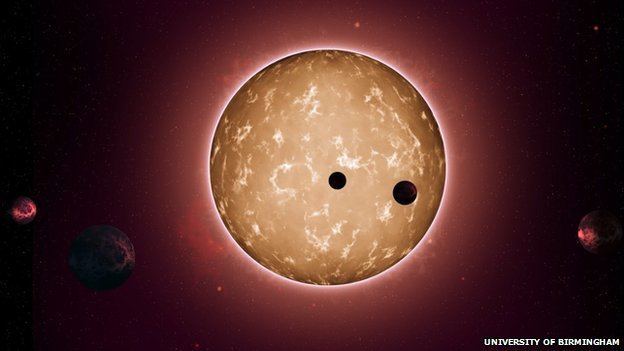
The original research on Kepler-444 was published in The Astrophysical Journal on 27 January 2015 under the title "An ancient extrasolar system with five sub-Earth-size planets" by a team of 40 authors, the abstract reads as follows:
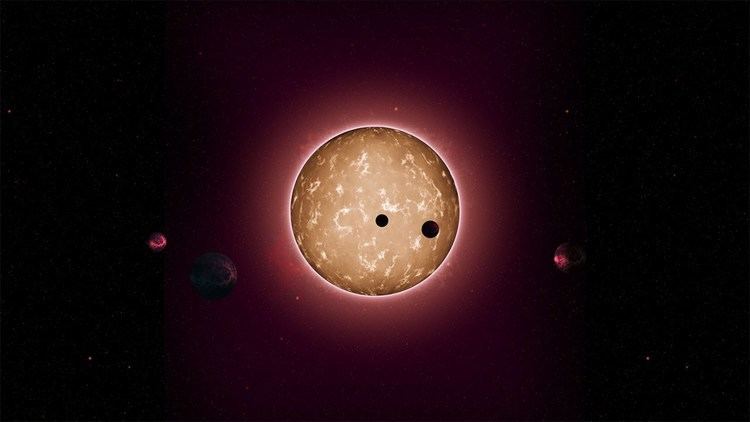
"The chemical composition of stars hosting small exoplanets (with radii less than four Earth radii) appears to be more diverse than that of gas-giant hosts, which tend to be metal-rich. This implies that small, including Earth-size, planets may have readily formed at earlier epochs in the Universe's history when metals were more scarce. We report Kepler spacecraft observations of Kepler-444, a metal-poor Sun-like star from the old population of the Galactic thick disk and the host to a compact system of five transiting planets with sizes between those of Mercury and Venus. We validate this system as a true five-planet system orbiting the target star and provide a detailed characterization of its planetary and orbital parameters based on an analysis of the transit photometry. Kepler-444 is the densest star with detected solar-like oscillations. We use asteroseismology to directly measure a precise age of 11.2+/-1.0 Gyr for the host star, indicating that Kepler-444 formed when the Universe was less than 20% of its current age and making it the oldest known system of terrestrial-size planets. We thus show that Earth-size planets have formed throughout most of the Universe's 13.8-billion-year history, leaving open the possibility for the existence of ancient life in the Galaxy. The age of Kepler-444 not only suggests that thick-disk stars were among the hosts to the first Galactic planets, but may also help to pinpoint the beginning of the era of planet formation." The star is believed to have 2 M dwarfs in orbit around it with the fainter companion 1.8 arc-seconds from the main star.
Planetary system
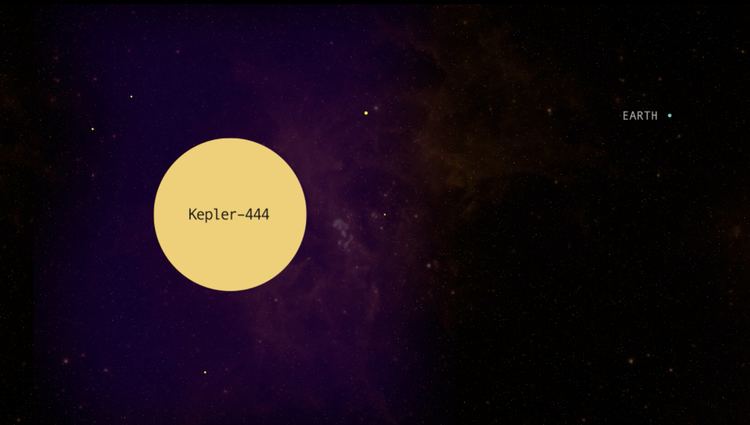
All five rocky exoplanets (Kepler-444b; Kepler-444c; Kepler-444d; Kepler-444e; Kepler-444f) are confirmed, smaller than the size of Venus (but bigger than Mercury) and each of the exoplanets completes an orbit around the host star in less than 10 days. The system is also very compact and Kepler-444b is the smallest at 0.403 earth diameters, and even the furthest planet, Kepler-444f, still orbits closer to the star than Mercury is to the Sun. According to NASA, no life as we know it could exist on these hot exoplanets, due to their close orbital distances to the host star.
